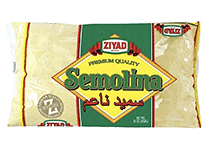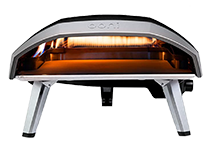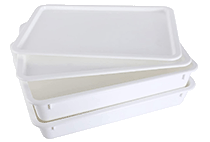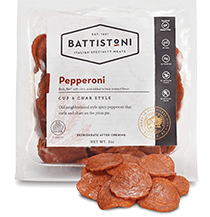Deciding between cornmeal or semolina on a pizza peel is the first step to figuring out what works best for your home pizza-making station.
As you grow in your pizza-making skills and become a more skilled home pizzaiolo, you have probably started getting more pizza-related gear like a pizza cutter, pizza oven, and pizza peel.
A pizza peel is a necessary pizza accessory for anyone serious about making good homemade pizza. But there is a bit of a learning curve when you first start using the pizza peel.
Table of Contents
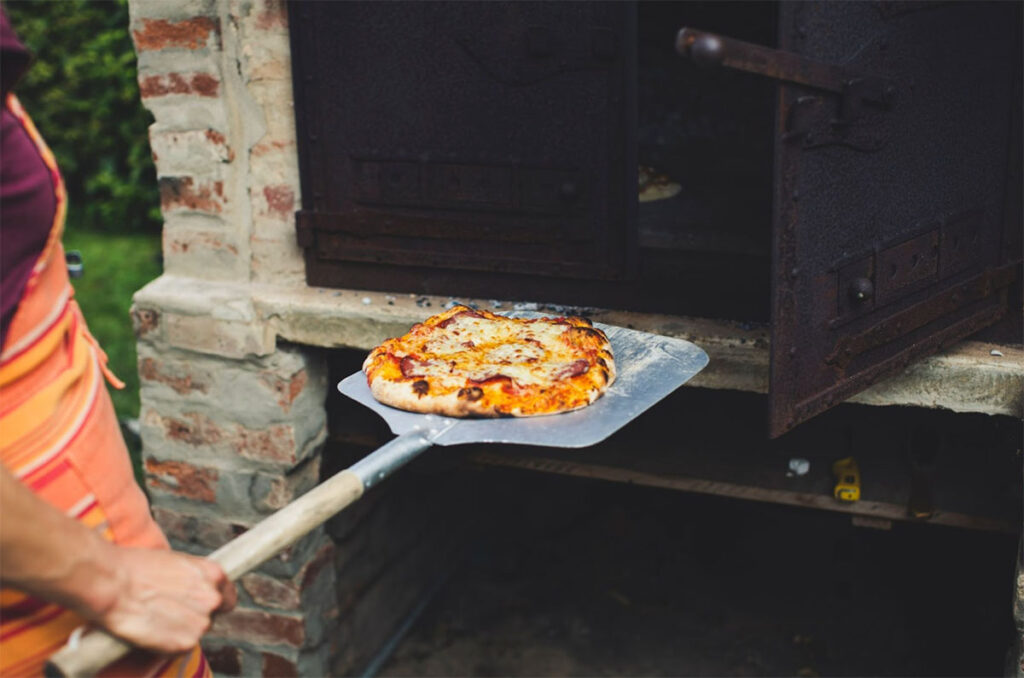
And part of that curve is deciding what to put on your pizza peel to keep your pizza from sticking to the peel. Ideally, you want your pizza to slide right off into the oven and easily slide back on when it’s done! Just like the professionals.
What is Cornmeal?

Cornmeal is ground yellow corn that can be ground from fine to coarse and anywhere between. The cornmeal you get packaged at the supermarket usually has a medium to dense texture and more starch than others.
Home chefs can use cornmeal to make more than just cornbread; think of cornmeal like breadcrumbs; it can be used to bread poultry, fish, and other foods that you want to fry.
While you can buy pre-packaged cornmeal, you can also make it yourself from dried corn. If your local supermarket has a bulk section, you can often find dried corn, and you can throw it in the food processor or blend it to grind it to the texture.
International markets or markets that specialize in Mexican food ingredients will often sell cornmeal in a variety of textures.
What about polenta, grits, and corn flour?
Ok, so cornmeal seems like it would be the same thing as grits, polenta, and corn flour, but it isn’t. First, polenta is an Italian dish made with ground corn, but it’s a different corn than the corn used to make cornmeal.
Cornmeal is made with dent corn which has a distinct taste. And polenta is made with flint corn which is medium ground and is milled differently and thus has a different, less corn-infused taste when cooked into polenta.
Grits are made with dent corn like cornmeal, but it’s coarser than the coarsest cornmeal. Grits have a grainy texture. Corn flour is just finely ground cornmeal which is gluten-free and used in gluten-free baking.
But if you see a product called Masa Harina, this is something different. This is a type of flour made from hominy which is big kernels of corn. These kernels are soaked in limewater to take off the casing and then ground into flour to use in tortillas, tamales, empanadas, and other yummy Mexican favorites.
Another type of precooked white corn meal from my wife‘s home country of Colombia [not Mexico] is called Harina Pan – this is the type used to make arepas and other delicious foods like that. We don’t use our Harina Pan for pizza peels.
What is Semolina?
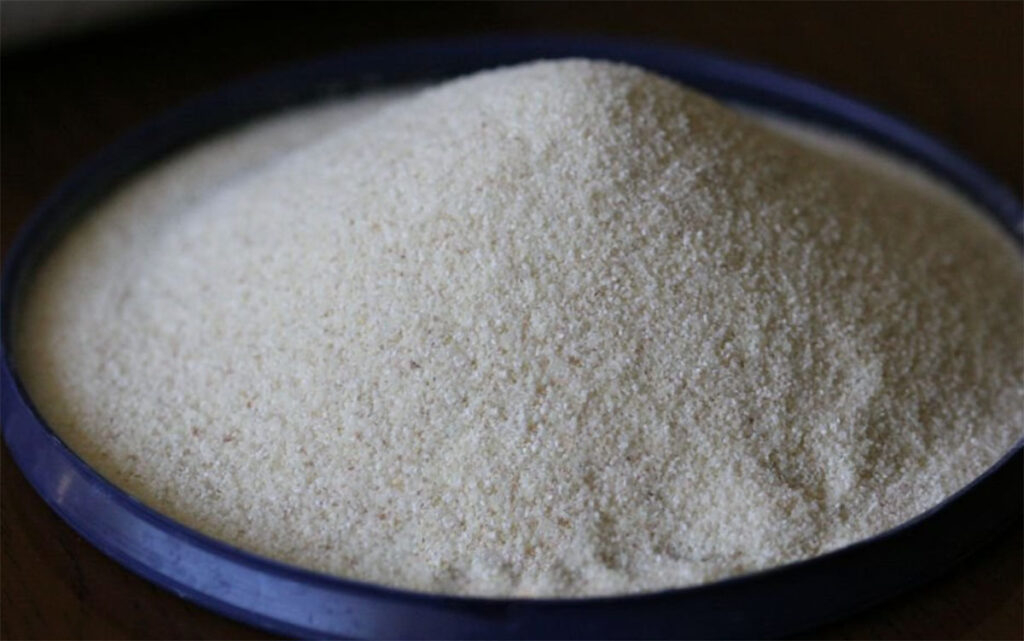
Semolina is a type of flour made from durum wheat. It is coarser than regular all-purpose flour and has a darker yellow color than white flour. Semolina flour is most commonly used to make pasta because it is high in gluten which makes the pasta dough stretchy without breaking its shape.
That yellow color on your bag of spaghetti noodles is from semolina flour. It’s also used for couscous, and it’s common in African stews and soups.
True semolina is only made with durum wheat, but you may find products on the shelves that are labeled with other names, but if it isn’t with durum wheat, it isn’t semolina.
Semolina is NOT gluten-free. But it is lower on the glycemic index than regular flour. That means it takes longer for your body to process and digest it. So if you are going to eat pasta and don’t want to feel guilty about all the carbs and calories, then you should really eat semolina pasta like they do in Italy.
Should You Use Cornmeal or Semolina on a Pizza Peel?
Ok, so both semolina and cornmeal can be used on a pizza peel. Most pizzerias and home pizzaiolos use semolina as it’s more traditional to use on a pizza peel. And semolina has a neutral flavor, and most importantly, it doesn’t burn at high temperatures.
If you are using a regular home oven, then that part doesn’t matter too much because you are probably making homemade pizza at 475º F or maybe even 500º F, which won’t burn cornmeal.
But if you’re using a pizza oven that reaches a very high temperature, like 750º to 900º F, then you definitely want to use semolina rather than cornmeal because cornmeal will burn and it leaves an unpleasant taste on the bottom of your pizza.
However, cornmeal is the way to go if you are gluten-free and using gluten-free pizza dough as long as you aren’t using a pizza oven. If you are gluten-free and using a pizza oven, the best bet is to dust your pizza peel with gluten-free flour.
Fine or Coarse Semolina for Pizza Peel
Semolina flour is a popular choice for making homemade pizza dough due to its high gluten content and ability to produce a crispy crust. However, there are different types of semolina flour available, including fine and coarse varieties. Fine semolina flour has a finer texture [obviously] and is often used for making pasta, while coarse semolina flour has a grittier texture and is better suited for making bread and pizza dough.
When it comes to using coarse or fine semolina for pizza peel and homemade pizza in a pizza oven, it is generally recommended to use coarse semolina flour. This is because the coarse texture of the flour helps to prevent the pizza dough from sticking to the peel and makes it easier to transfer the pizza onto the hot pizza stone or your backyard’s piping hot pizza oven.
Additionally, the coarse texture of the semolina flour can also help to create a slightly crispy texture on the bottom of the pizza crust, which some people don’t care for too much.
Pros Semolina on Pizza Peel
- Doesn’t burn at high temps
- Neutral taste
- Fine texture
Cons Semolina on Pizza Peel
- NOT gluten-free
Pros Cornmeal on Pizza Peel
- Gluten-free
- Doesn’t burn in a regular oven
- Adds texture
Cons of Cornmeal on a Pizza Peel
- Burns in a high temp pizza oven
- If coarse ground, it adds an unpleasant texture
- Affects the taste of pizza
So there you have it, everything you need to know about to make choosing cornmeal or semolina on a pizza peel.
Do you use cornmeal or semolina on your pizza peel? Any particular reasons why?

